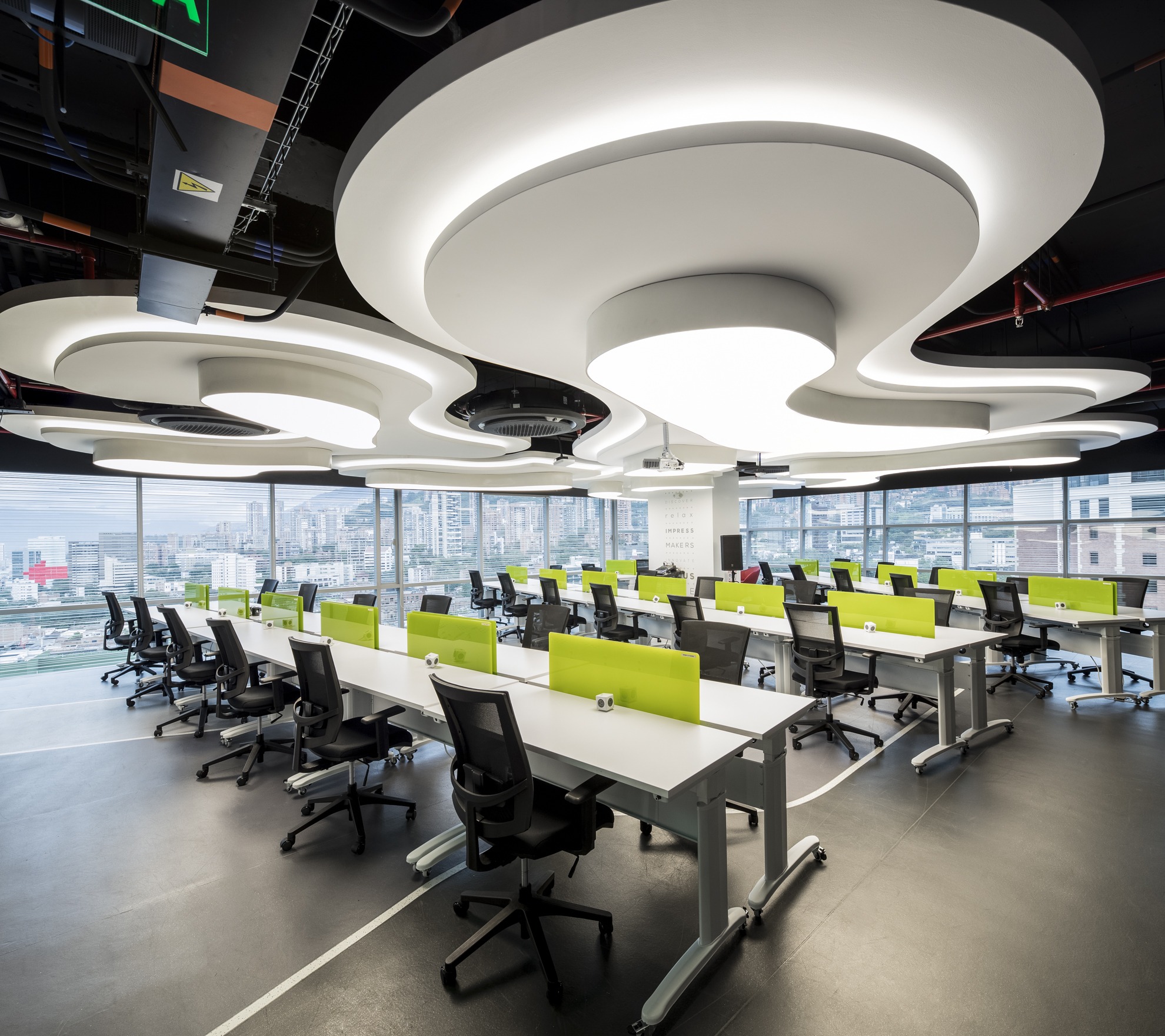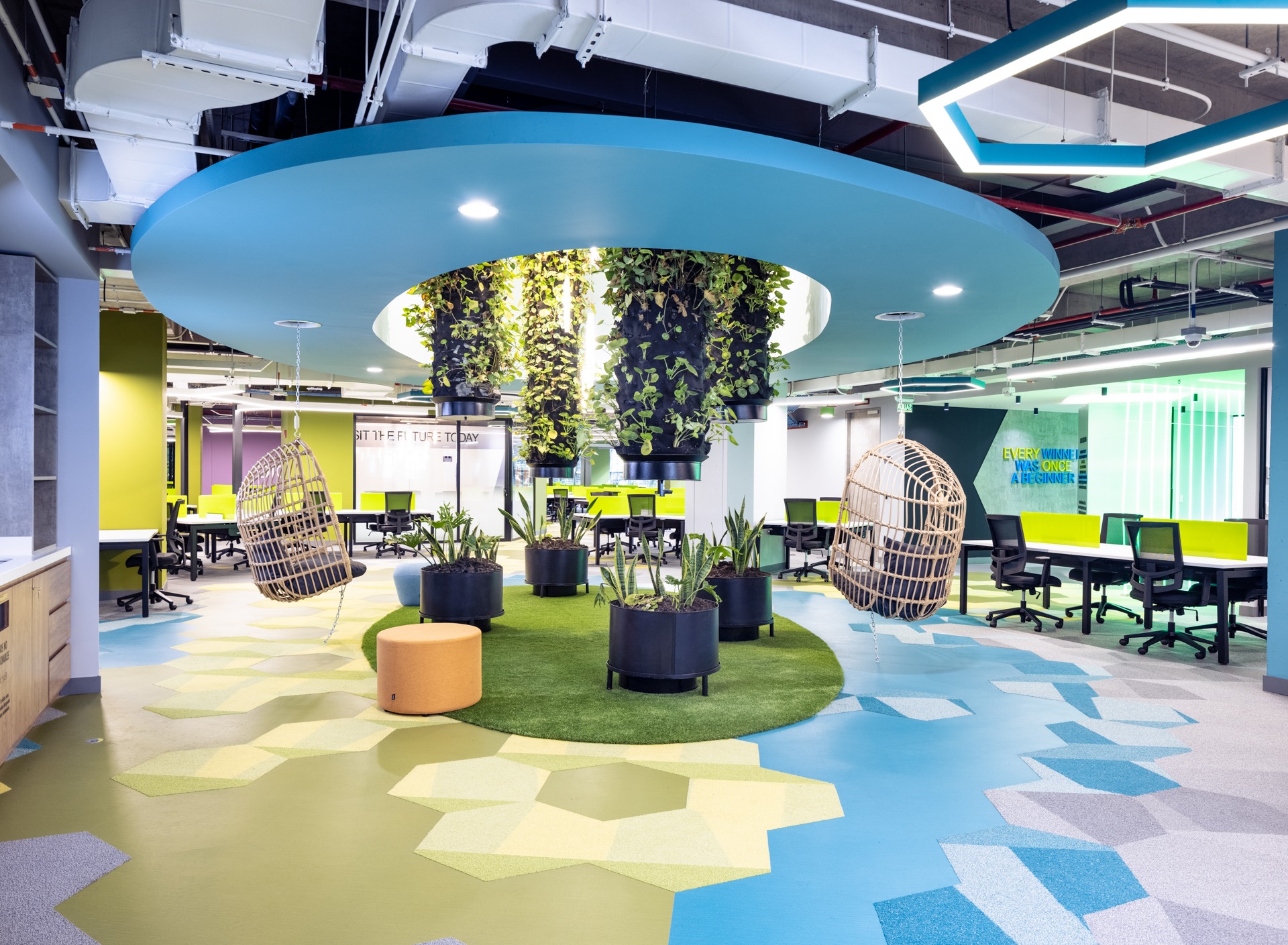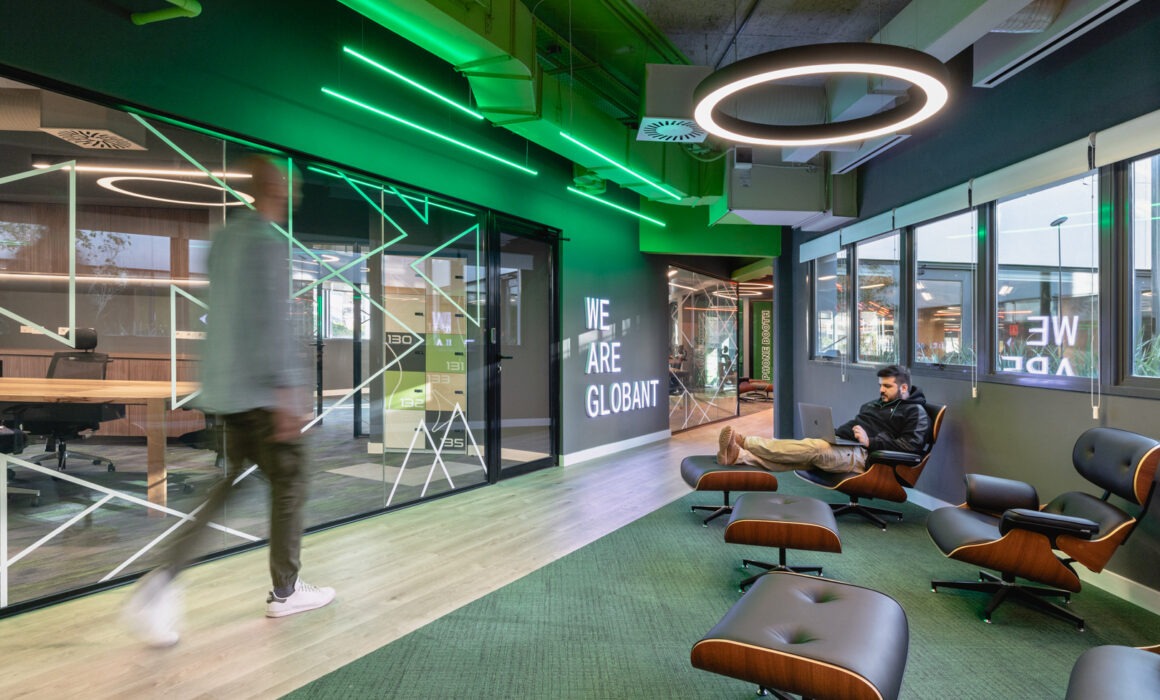A well-equipped office offers a dual advantage, the first is an office space that both companies and team members want to work in because both can thrive. In today’s offices, where well-being is at the heart of a successful business, this is especially relevant. The second advantage is real estate that will continue to be in high demand over the coming years: human-centered offices. The Modern Office It’s a question of logic. We spend an average of eight hours a day in our work environment; comfort and practicality are priorities. Aside from creating a workplace conducive to employee productivity, the modern office also gives prominence to employee well-being through design hacks that not only enhance office morale, but also make the property itself desirable. A Win For Well-being Well-being at work is all the rage nowadays, and rightly so – with mental health issues stemming from work-related issues rubbing shoulders with one out of every five Americans, the chances are that if it isn’t one of your colleagues suffering, it’s you. The consequences can never be good for business – or the people that make it all come together. Fortunately, growing awareness of the effects of the workplace on mental health and therefore, business, has captured the attention of progressive landlords and office owners. Traditional hierarchies in which the workforce is ancillary to the owner’s personal requirements for business success have been switched out in favor of flexible work employees’ work-life needs are met, and everybody benefits. The pandemic and remote work have made us reevaluate what it means to be an office worker, and the resounding outcome is that we need a work environment with a company culture that complements our well-being and work-life balance. The Worker’s Office Modern office design features not only attempt to eliminate more discrete health hazards, they actually enhance the well-being of their co-workers by placing the focus on human-centered design, where all needs of the workforce are met. High-ticket tenants and buyers actively seek out offices that tick these boxes: Ergonomic seating and height-adjustable desks can help counteract the physical discomfort of sitting in the same position for eight hours a day. Workers that have some autonomy and choice in their arrangement fare better than those that do not. We can take this further by offering a variety of workstations, such as in this office, contrasted with individualized areas such as these, where depending on the nature of the work involved, employees can flitter between face-to-face teamwork and more individualized activities. A further advantage of a working environment that offers flexibility in working areas is that it can enhance the workweek in any number of businesses. More dynamic workspaces appeal to larger audiences, which helps attract and retain top talent and is a good incentive for buyers. Biophilia is our desire to be closer to nature. Studies have shown that the mental well-being of office workers is better in offices whose design features curves as opposed to straight lines – pathways, desk edges, partition walls, and flooring can emulate nature when we avoid excessive usage of right angles, and this has a positive effect on our state of mind. When offices leverage the soothing effects of nature, such as natural lighting and an abundance of plants, we are presented with an inviting environment where employee engagement is high because they feel good. Well-being strikes again. Another key player, DEI, weaved into design is becoming a must-have for tenants rather than a nice-to-have feature. Accessibility is non-negotiable. Ramps and wide, easy access not only guarantee the comfort of wheelchair users, but they also entwine with the element of curves we mentioned previously. While most offices have accessibility in mind, the execution of such features is rarely seamless and tends to divide users according to physical ability, rather than offer an aesthetically-pleasing design that is truly inclusive. Let’s remember to offer equitable solutions that level the playing field, no pun intended. Today’s office environment transcends the caged feel of the white-walled office of the nineties to bring us divergent zones that blend harmoniously. Some of our greatest ideas come to us during the water cooler chat, that moment of socialization when the pressure of performance falls into remiss – and successful companies deem lounge areas and recreational spaces paramount to employee well-being. Furthermore, under Chapter 448 (448.05) of the 2021 Florida statutes, employees must have suitable seating for purposes of rest during the workday, making a recreational area a fundamental aspect of any working environment. Google offices even add games to their office equipment. While you don’t have to turn your facility into an amusement park, recreational areas are a pillar of workspace wellbeing, because breaks, socialization, and changing the work area let us get back to work with renewed energy and insight. Workplace Appeal The fast-paced, results-focussed, sterile environment of yesteryear has been replaced with office space initiatives that spotlight the processes and the people. The open office of our time recreates a homely, personalized space that puts employee health on a pedestal. The harmony of a modern workspace makes our workers more productive, less stressed, and more present, which is good for business. Secondly, they feel more satisfied with their job, which helps accomplish Decent Work and Economic Growth, one of the 17 Sustainable Development Goals (SDGs). Finally, the facility itself ranks highly on realtors’ listings, as companies search for the ideal companion for strategic growth and staff well-being. Conclusions Office design has the ability to make or break a team — and a business. Where comfort, in the broader sense of the word reigns supreme, office workers can feel at home away from home, in an office where their well-being takes center stage, productivity, and cognitive prowess can soar. Recap
Ergonomics is regularly misunderstood as a concept that relates purely to furniture design. However, the scope of this field of study, first coined by Polish scholar Wojciech Jastrzębowski as early as 1857 though not popularized until the translation of his book was reprinted in English in 1997, stretches beyond purposely-designed chairs and can — or rather should — be applied to the whole work environment. But why? And more importantly, how do we achieve the bigger picture of a holistically-ergonomic office? Why Create an Ergonomic Workspace? It’s no secret that office workers spend a great deal of time sitting in front of a computer screen. A sedentary career coupled with badly-designed office spaces can impair workers’ well-being, with common complaints of back pain from slouching, carpal tunnel syndrome, eye strain, and lower and upper arm pain from repetitive motions. Research has shown that poor office ergonomics is not only linked to physical ailments but poor mental health, too. Sitting for long periods can reduce blood flow to the brain, slowing brain function. Bad news for the worker and bad news for business as productivity is affected as a consequence. OSHA has cited that musculoskeletal disorders and ergonomic injuries have direct costs of between US$15 billion to US$20 billion per year. This sum comes from both the company costs and the losses a worker will experience due to sick days and rehabilitation. The good news? Much of the problem can be avoided. How to Create an Ergonomic Workspace Now you know why it is essential to look at office ergonomics from a holistic viewpoint rather than just providing good ergonomic chairs and maybe a height-adjustable desk. We need to look at the bigger picture, where the entire work environment is carefully designed to save employees’ health, maintain productivity, and reduce costs for both the worker and the business. Modern companies are already evolving to eliminate fluorescent lighting, rows of identical booths, and cold air on blast year-round to leverage natural lighting, airflow, and different areas for different kinds of work in the office where workers can flit freely between spaces in a bid to enhance their well-being. Here’s how to create an ergonomic office: Office workers need to add an element of motion into their day. Physical activity is essential for good health, circulation, and therefore mental performance. The UN office in Valencia, Spain, cleverly positioned its cafeteria separately from the main building, with a meandering path that takes its workers from one to the other. This compels staff to add to their step count to take a coffee or a bite. Even if you have no intention to build an office from the ground up, there are some takeaways from the UN office concept that can be leveraged — by creating a labyrinth of office furniture rather than rows, office workers will find that to get from A to B they will cover more distance, increasing the amount of physical activity that can be squeezed into their day. Frequent breaks should comprise part of the company culture, since they improve workers’ job satisfaction, boost productivity, and contribute to better mental and physical health, according to Michigan State University. The question is how office design can be linked to quality breaks. While some people crave social interaction, others need a place to rest and disconnect away from the bustling office environment and computer monitors. For this reason, various spaces destined purely for breaks can be a welcome addition to any office. The first option is a quiet room with comfortable (ergonomic) furniture, low lighting, and a distinct lack of electronics. More colorful and activity-based rooms or areas are an option to cater to the team’s social branch, just like in TripAdvisor’s Needham office. Although it is important to look at office design from a more holistic point of view, from within company culture, work areas that incorporate ergonomic workstations should not be overlooked. Various desk heights, adjustable ones, or standing desks come to mind. As does the option to pick up a riser for the office chair. Correct lumbar support and armrests are further considerations when it comes to furniture. In environments where screentime could develop into a concern, mitigating risk by keeping computer screens at eye level, offering employees the option to use a footrest or a keyboard tray, and fine-tuning the furniture ensembles all contribute toward a healthier, more productive, and more cost-effective business model. Recommended Course of Action Even before embarking on a design project that promises to change the office layout and incorporate spaces that are specifically designed with worker well-being in mind, instilling a company culture that encourages workers to take control of their workday to the extent of which it is a possibility is the recommended starting line. Forbes looks at the unwritten rules of great company culture, while OpenSourcedWorkplace reminds us of the physical and mental benefits of prioritizing ergonomics in company culture. After establishing and following through with an effective company culture plan, you can work with a team of experienced designers with one thing in mind: your business. At AEI Spaces, we have a team of dedicated designers who know that for a business to be profitable, it needs to care for its greatest asset: its people. And in office design, that starts with ergonomics. Conclusions When most people think of ergonomics, they think of a well-designed chair intended to support the lower back and correct posture. However, the field of ergonomics is much broader than you might expect, and includes looking at the office from a holistic point of view and considering: These aspects of ergonomics play a key role in the physical and mental well-being of your team, all the while reducing injury and improving productivity. What is good for your people is good for your business.
La inteligencia artificial (IA) es una tecnología que permite el desarrollo de sistemas capaces de realizar tareas que, generalmente, requieren inteligencia humana. Por ello, ofrece oportunidades para cambiar radicalmente el flujo de trabajo existente dentro de muchos campos. De hecho, para 2025, esta tecnología eliminará 85 millones de puestos de trabajo, pero creará 97 millones nuevos, lo que significa que habrá 12 millones de empleos adicionales, según el Foro Económico Mundial. Usualmente se relaciona con sectores como TIC (tecnologías de la Información y las comunicaciones), medicina, ciberseguridad o manufactura. Sin embargo, esta tecnología también desempeña un papel importante en la industria de la construcción y en el campo de la arquitectura y el diseño. Se estima que el mercado mundial de IA en estos sectores tendrá una tasa de crecimiento anual compuesto (CAGR) del 33,87 %, de acuerdo con la firma de consultoría e inteligencia de mercado Mordor Intelligence. De hecho, la inteligencia artificial ya se utiliza para optimizar varios aspectos del diseño de interiores. Ayuda a los diseñadores a plasmar sus ideas de una manera más ágil y rápida gracias al machine learning (aprendizaje automático), ya que permite analizar enormes cantidades de datos y sugerir ajustes en el diseño en tiempo real. Cuál es el potencial de la IA en los procesos de diseño Hoy en día, muchas tareas de diseño que solían ser prerrogativas de los humanos pueden ser asumidas por la IA. Los arquitectos y diseñadores de interiores podrían usar esta tecnología de muchas formas, pues es útil para tareas que van desde la planificación del espacio hasta la selección del tipo de materiales a usar. En el mundo de la arquitectura y el diseño, la inteligencia artificial permite: Optimizar el tiempo de planificación de proyectos En el proceso de construcción de un edificio u oficina, la IA permite reducir el tiempo que se tarda en planear y diseñar una estructura gracias al Building Information Modeling (BIM). Esta metodología de trabajo permite el uso de diferentes programas de diseño para obtener una imagen completa de una estructura, incluyendo el diseño conceptual y detallado, el análisis, la documentación, la fabricación, la construcción, la operación y hasta el mantenimiento. Si se aprovechan bien estos datos, la IA puede realizar un análisis e identificar tendencias o ineficiencias para que los arquitectos diseñen proyectos mejores y más duraderos sin perder tanto tiempo en su análisis. Identificar las preferencias de los clientes y crear diferentes variantes Las nuevas tecnologías basadas en la IA permiten saber qué le gusta a tu público objetivo y a tus clientes individuales. Podrás analizar su comportamiento y preferencias para tener un camino a seguir y crear un diseño adaptado a sus gustos y necesidades. Después de reconocer un patrón, la inteligencia artificial también puede ayudar a los diseñadores a crear múltiples variantes. El algoritmo extrae colores y patrones de un diseño y posteriormente crea diferentes opciones para mostrar al cliente. Estimular la creatividad La inteligencia artificial puede encargarse de tareas repetitivas que consumen mucho tiempo y esfuerzo para los diseñadores y arquitectos. Al liberarse de este trabajo, tienen más tiempo para dedicarse a la construcción de ideas. Permitir una construcción más eficiente Las herramientas y programas de software hacen que los cálculos de construcción y el análisis del medio ambiente sea una tarea más sencilla. Gracias a la tecnología, extraer información relacionada con datos meteorológicos o con las clasificaciones de materiales, por ejemplo, ya no requiere de largos periodos, por lo que es más fácil incorporar la sostenibilidad y la eficiencia energética en la arquitectura. Tres tecnologías para usar la IA en el diseño A medida que la inteligencia artificial se hace más avanzada, sus aplicaciones se vuelven casi ilimitadas. Actualmente, los diseñadores pueden usarla de muchas formas a través de tecnologías como: La realidad aumentada permite superponer información digital sobre el mundo físico para simular todo, desde la estética de un lugar hasta los sonidos. Por ello, esta tecnología permite que los clientes tengan una experiencia real en su espacio antes de que se construya. De este modo, los diseñadores y arquitectos pueden mostrar a sus clientes lo que están imaginando para evaluar si se corresponde con lo que quieren o esperan, lo que hace que el proceso de diseño sea más fluido y eficiente. Es un proceso en el que se analizan datos para hacer predicciones sobre eventos futuros. Esto puede ser de gran ayuda para los profesionales que necesitan anticipar cambios de estilo o tendencias para mantenerse por delante de la competencia. Además, la analítica predictiva puede ayudar a los diseñadores a identificar potenciales problemas en un diseño antes de que se implemente, lo que ayuda a ahorrar tiempo y recursos a largo plazo. Así, esta tecnología basada en IA ofrece tranquilidad al predecir lo que podría ocurrir en el futuro para evitarlo. La creación de un diseño que guste y se adapte a lo que el cliente tiene en mente es siempre un reto. Por fortuna, hoy en día ya no es necesario que los profesionales proyecten sus ideas sobre el papel. Actualmente, las nuevas formas arquitectónicas se pueden valer del diseño paramétrico. Esta es una técnica de diseño digital que permite introducir una serie de variables como volúmenes, límites espaciales o temperaturas en un software especializado para manipularlos a través de algoritmos y obtener diseños geométricos más versátiles, complejos y originales. Entre los software más demandados se encuentran BIM 360, Revit o Ecotect Analysis de Autodesk. Conclusiones A profesionales de diversos sectores les preocupa que la IA acabe con muchos puestos de trabajo y que termine reemplazando al ser humano. Aunque la preocupación es válida, la realidad es que la mayoría de los expertos coinciden en que la inteligencia artificial tiene el potencial de mejorar el trabajo en muchos campos. La arquitectura, por ejemplo, puede beneficiarse de procesos más sencillos, ágiles, eficientes y seguros. El proceso de diseño se caracteriza por ser muy creativo y personal, de modo que la conexión y la interacción humana todavía resulta imprescindible. Sin embargo, no




